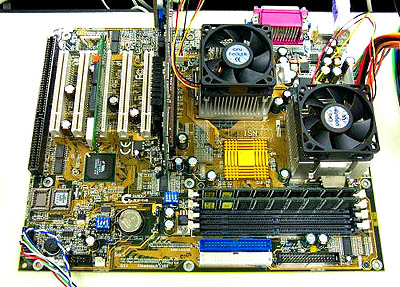X-Bit Labs heeft een artikel gepost waarin de performance en stabiliteit van de VIA Apollo Pro133A en good old 440BX chipsets bij gebruik in een dual PIII-650 config worden vergeleken. Als voorbeeld van een dual processor Apollo Pro133A plank werd de Gigabyte GA-6VXDC7 genomen. Het dual 440BX kamp werd vertegenwoordig door de SuperMicro P6DBE.
Beide systemen bleken qua prestaties aan elkaar gewaagd te zijn; soms was het Gigabyte plankje sneller en soms het SuperMicro bord. In alle gevallen was het verschil tussen de twee mobo's erg klein. Ook wat betreft stabiliteit kon het Gigabyte bord zich prima meten met het beproefde P6DBE bord van SuperMicro. De stabiliteitsproblemen die bij de eerste generatie dual Apollo Pro133A mobo's aan het licht kwamen, konden absoluut niet terug gevonden worden bij de Gigabyte GA-6VXDC7:
Every time we come to speak about multi-processor systems, the stability issue rises. That's why we tested the stability and reliability of VIA Apollo Pro133A based dual-processor system very carefully. And we have to admit that we were satisfied with the results achieved.Although the first dual-processor systems based on VIA Apollo Pro133A were not the most stable and reliable solutions, now the situation has definitely changed for the better. Probably, the chipset owes a part of this success to AMIBIOS, which is used on Gigabyte GA-6VXDC7 mainboard instead of the ordinary Award BIOS.
Nevertheless, we can't deny the fact that the system based on Gigabyte GA-6VXDC7 proved as stable as the one based on Supermicro SUPER P6DBE (i440BX), which is certainly a great achievement for VIA. That's why from now on you can trust VIA Apollo Pro133A based SMP-systems.
 |

